This image shows stages in the evolution of Ganymede.
Evolution of Ganymede
The moons and planets formed by accretion of rocky material and volatiles out of the primitive solar nebula. As they finished forming, about 4 Billion Years ago, the surface continued to be bombarde
d by the remmanent of planetary material available nearby. This period is called the Period of Late, Heavy Bombardment. From the Period of Late, Heavy Bombardment forward, this is probably what happened to Ganymede:
- it warmed up from inside, which caused the inside to separate
- the interior of Ganymede began to cool off
- there was a late episode of further warming and volcanism, somewhat like case of Mars, which caused the surface to stretch and break, and which created the
grooved terrain.
You might also be interested in:
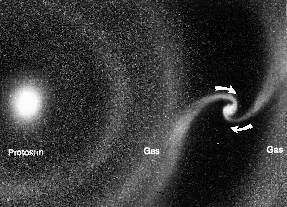
As shown in this picture, while they were forming in the solar nebula, the nucleii of the planets-to-be (called protoplanets) drew material to themselves from the cloud of gas and dust around them. The
...more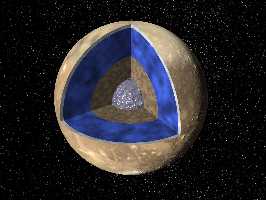
Differentiation is a scientific term which really means "to separate". In their earliest history, elements which made the planets would part into separate regions, if the planet were warm enough. This
...more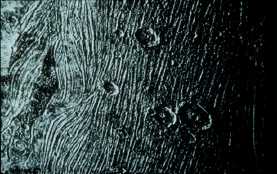
This image shows an example of the grooved terrain of Ganymede. The image clearly shows that some things hit Ganymede and made craters after the grooves were made, because the grooves are underneath the
...more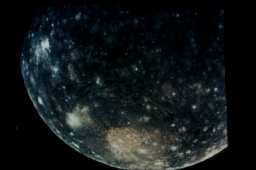
The insides of most of the moons and planets separated while they were forming out of the primitive solar nebula. Measurements by the Galileo spacecraft have been shown that Callisto is the same inside
...more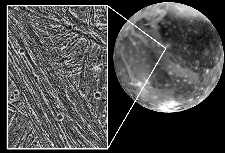
Instead of icy-volcanism, the surface of Ganymede reveals gradual surface deformation and stretching, a stretching similar to the crustal deformation of the Earth. In this case, the folding and stretching
...more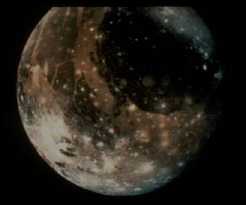
The surface of Ganymede is halfway between that of Callisto and that of Europa. Portions of the crust are of ancient age, while other portions are relatively new. The little white dots shown in this image
...more
Amalthea was discovered by E Barnard in 1872. Of the 17 moons it is the 3rd closest to Jupiter, with a standoff distance of 181,300 km. Amalthea is about the size of a county or small state, and is just
...more















